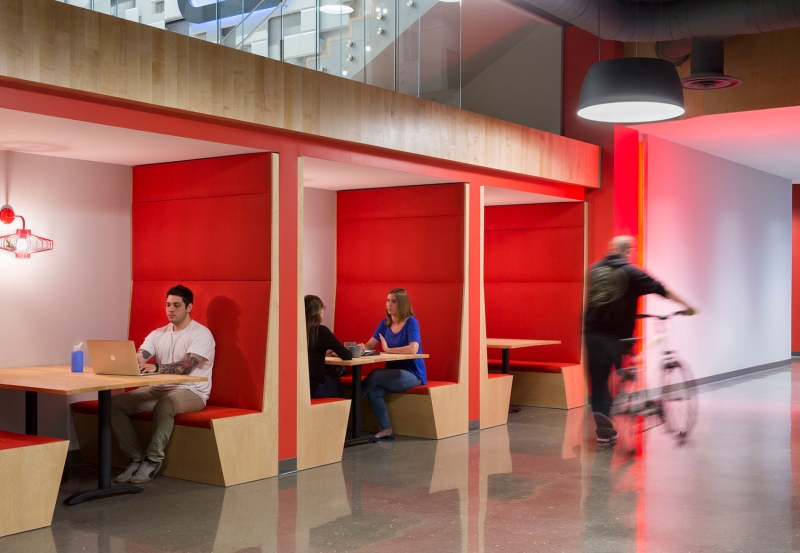
Let us show you how culture can inform design
Culture can derive influence from many sources, such as historical or ethnic or geographic or even shared workplace vision. Designers can physically express culture, and influence it if desired, through the use of spatial layout, interior architecture, design elements and materials selection. Understanding a client's culture before attempting to identify design solutions is an essential part of Page's pre-design process.
Culturally driven behaviors can shape the design process which in turn can further influence those behaviors. These include social dynamics and local customs. As societies become increasingly more globalized and diverse, workplace designs find common ground among employees and visitors in supporting the company's purpose, often creating aspirational spaces that motivate occupants and remind them of why they come together.
At Page, our teams work closely with our clients to assess what key factors are important to them, their stakeholders and surrounding communities, then come to agreement on how to prioritize them during the process of developing design solutions. Our award-winning workspaces have been recognized by top tier publications such as Architectural Record, Interior Design Magazine and Forbes Magazine.
Services
- Architecture
- Building Sciences
- Corporate / Commercial
- Engineering
- Interiors
- Planning / Urban Design
- Strategies / Analytics
Respecting history while reflecting today
When the Abu Dhabi National Oil Company (ADNOC) built its original 1970s headquarters, composed mostly of enclosed offices, its design was a hallmark of Western office culture at that time. By contrast, the new interior office design aligns with the increased collaborative and transparent nature of its current generation of employees by featuring much more open spaces and long lines of sight.


Through a palette of natural stone, wood veneer and architectural metals, the new interior design is a subtle blend of the traditional and the contemporary. It expresses the solidity, permanence and stability of ADNOC within the United Arab Emirates and the world at large. The design created an environment that reflects the company’s vision of the future while continuing to embrace its cultural heritage.
These games are real
An award-winning independent developer of interactive entertainment tasked Page to create a home for them that reflected the company’s mission of “To Entertain The World” and its creative, risk-taking culture. The process was a true collaboration between two creative firms that share common creative traits such as 3D thinking capabilities and artistic design talents. The look and feel of the finished 90,000 square foot space was inspired by the games for which Gearbox is known – dark, brooding and at times a bit unsettling.


The super-wide “Epic” stair, which was a must-have for Gearbox, is the site of regular all-employee meetings. On every floor, specific areas give staff the opportunity to recharge, such as “Kick-back” high-tech (online) recreation, low-tech (old school arcade) and no-tech gaming (foosball, Dungeons & Dragons, pool, Monopoly). Color is used intentionally to designate zones and to inspire creativity.
Cementing who you are
Wiss, Janney, Elstner Associates (WJE) is an interdisciplinary engineering firm whose practice group in Austin has a particular expertise in concrete construction. The office has their own petrography lab, so when Page began to design a 13,000 square foot office building for them, the decision was made to explore concrete as a building material.


The design team proposed using high thermal mass concrete walls as a means of reducing energy consumption, and WJE recognized an interesting test case for experimentation. The finished building has a very strong, robust feel to it that is absent in most construction at this scale. It reflects the culture of the company, their ethos of modern thinking and specific expertise, combined with a tactile sense of Austin as the innovation hub they call home.
Great workplace design often leads a cultural shift for our clients by supporting inclusivity and opportunity. The built environment can reflect company culture or shape its growth. Workplace design is an attraction and retention tool that also helps clients sell their services by representing their best asset, their people.
Kate Schneider, RID, IIDA, LEED GA